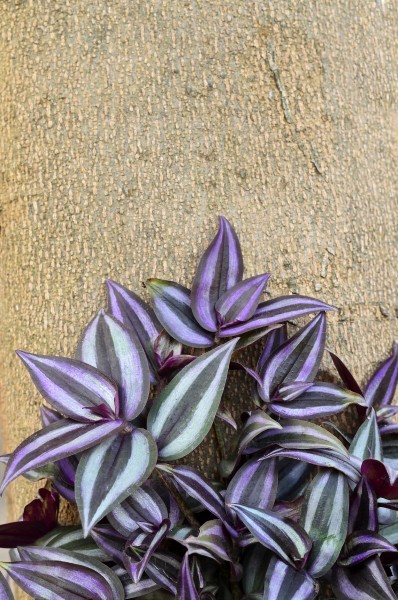






The wandering jew plant (Tradescantia pallid) is truly one of the easiest plants to grow and is often sold throughout North America as a houseplant due to its adaptability. The wandering jew plant has small pink flowers that flower sporadically through the year and contrast nicely against its purple foliage, making it a lovely container specimen either indoors or out.
Did I say outdoors? So can wandering jew survive outdoors? Yes, indeed, provided you live in USDA zone 9. Wandering jews like warm temperatures and fairly high humidity. As its name implies, growing wandering jew has a well, wandering or trailing habit. In USDA zone 9, growing wandering jew makes an excellent ground cover, especially under taller specimen plants or around the base of trees.
Now that we have ascertained that wandering jew is not just a pretty houseplant, the question remains, “How to plant a wandering jew outdoors?” Just as wandering jew grows quickly and easily as a hanging houseplant, it will soon cover a large area of outdoor landscape as well.
Wandering jew plant should be planted in shade to partial sun (indirect sunlight) either in hanging baskets or in the ground in the spring. You may either use a start from the local nursery or a cutting from an existing wandering jew plant.
Wandering jew will do best in rich soil with good drainage. Cover the roots of the start or cutting and the bottom 3 to 5 inches of stem with soil, taking care as the plant breaks very easily. You may need to remove some of the leaves to get a good few inches of stem to plant.
Keep wandering jew moist but not wet; it’s better to underwater than overwater. Don’t worry, wandering jew plants can survive very dry conditions. But don’t forget it all together!
When caring for wandering jew, liquid fertilizer should be applied weekly to foster a good rooting system.
You may pinch the stems to encourage bushier (and healthier) growth and then use the cuttings to create new plants, or “fluff up” a spindly hanging plant. Either put the cuttings in with the hanging jew to root, or place in water and allow to root and then plant.
When wandering jew is planted outdoors, it will die back if frost or freezing temperatures arise. However, it will be sure to return in the spring provided the freeze was of short duration and temperatures warm quickly again.
Provided you live in an area of sufficient humidity and heat, there is no doubt that you will be enjoying the fast and easy growing wandering jew for years to come.
Copyright © www.100flowers.win Botanic Garden All Rights Reserved